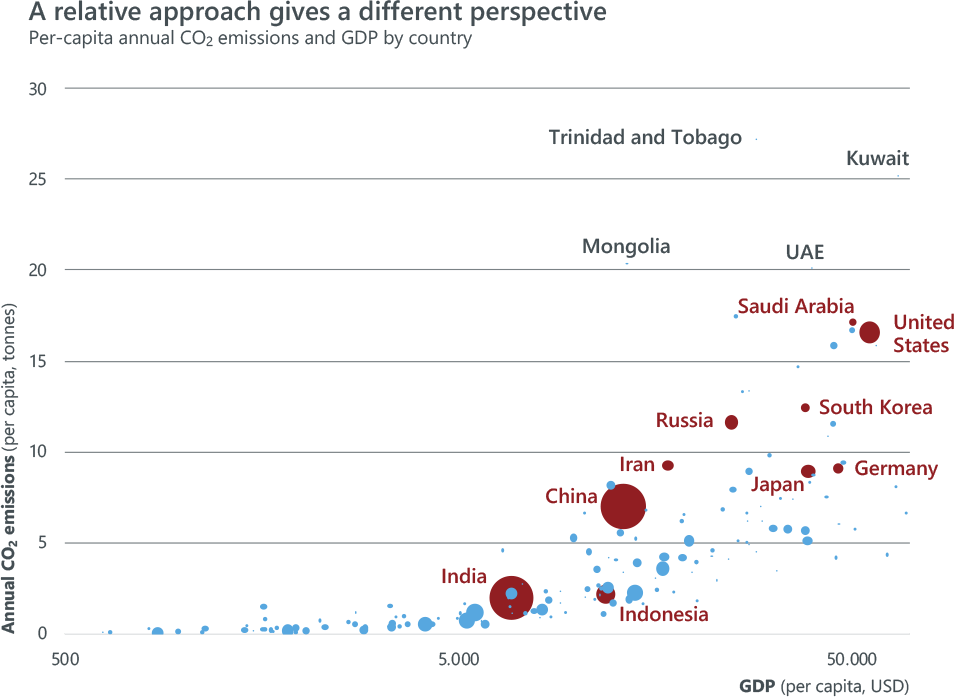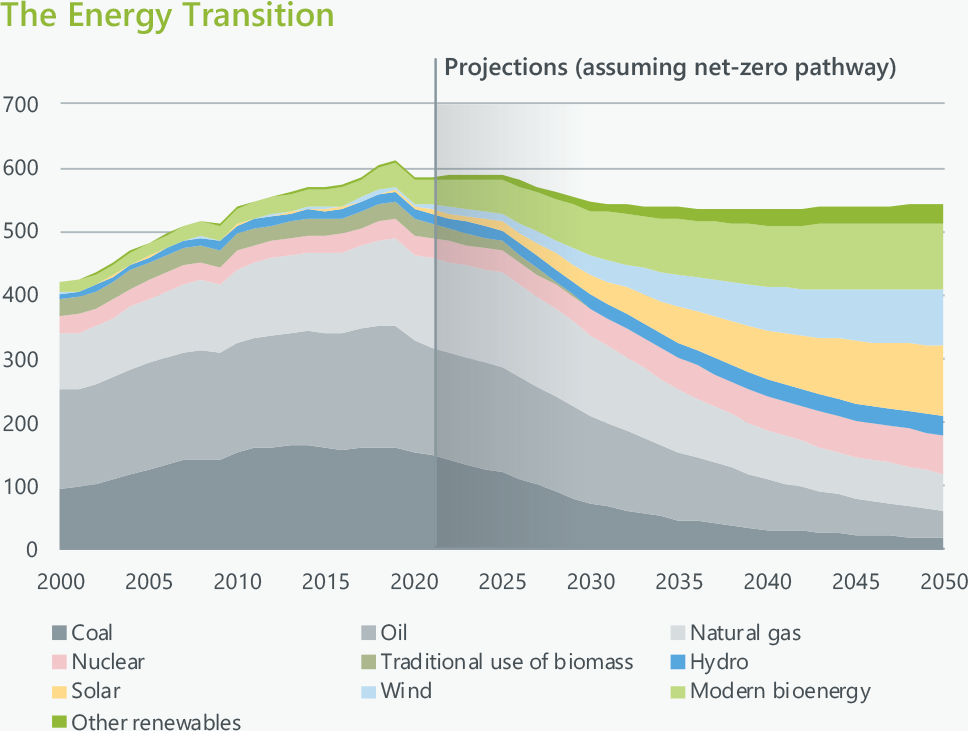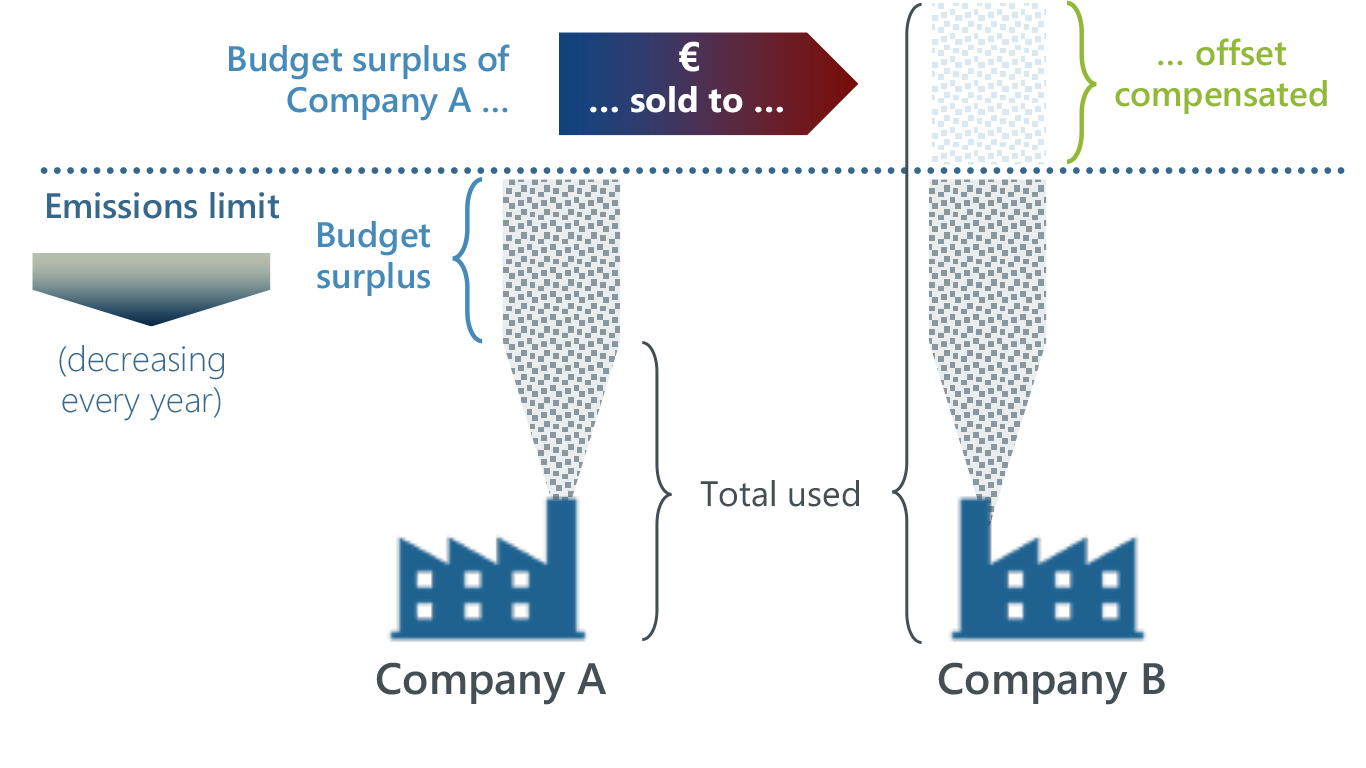Agenda
The Challenge
How is climate change affecting us today, and why is it important to act now?
Perspectives
What action is currently being taken, and why is the 1.5°C goal so important?
Market Solutions
How can existing market systems be used to mitigate climate change?
The Challenge
Did you know …?
![]() flip to learn!
flip to learn!
65,000
hectares
… of fully grown forest are needed to offset the CO2 emissions of all flights on „the short trip from Germany to Mallorca“. This is about 2.7x the Bavarian Forest National Park.
Source: ICAO Carbon Emissions Calculator (2021); own calculations
+3.0°C
… is the global warming that is expected by 2050, given our current pathway and behaviour.
Source: IPCC (2021); Deutscher Wetterdienst (2020)
1.5bn people
… depend on forests
for their livelihoods.
Source: SYSTEMIQ (2019)
What is causing the problem?
Human activity is changing the temperature on our planet by releasing high quantities of Greenhouse Gases (GHGs), such as carbon dioxide, into the atmosphere. At the same time, the parts of nature that use carbon and remove it from the atmosphere, such as forests and soil, are being degraded or destroyed. This inflicts severe damage to our environment in various ways.
Use the slider to change between sector and source

The value of protecting and restoring nature is substantially larger than the price of destroying it.
A budgeting approach to carbon emissions
To stabilise global temperatures, only a limited amount of emissions can be released before global emissions need to reach net zero. A “carbon budget” regulates the CO2 input to the atmosphere with output (storage) in the carbon reservoirs on land or in the ocean.
Global Remaining Carbon Budgets
+1.5°C | 66%
scenario
With a 66% probability budget will be exhausted in approx. 4.5 years at current emissions levels
+1.5°C | 50%
scenario
With a 50% probability budget will be exhausted in approx. 8.25 years at current emissions levels
+2.0°C | 66%
scenario
With a 66% probability budget will be exhausted in approx. 22 years at current emissions levels
+2.0°C | 50%
scenario
With a 50% probability budget will be exhausted in approx. 30 years at current emissions levels
High importance of rapid and decisive action regarding climate change mitigation.
Perspectives
Did you know …?
![]() flip to learn!
flip to learn!
2/3
of GHG emissions are
produced by only
10 countries
Source: Concerned Scientists (2020)
1/2
of GHG emissions are
produced by only
3 countries
Just three countries in the top 10 account for 50% of global emissions: China (28%), United States (15%), India (7%).
Source: Concerned Scientists (2020)

Why the Paris targets matter
Limiting warming to 1.5 °C could reduce the number of people worldwide who are exposed to climate-related risks and resulting poverty by hundreds of millions of people, compared with a rise of 2 °C
toggle to see the difference … and flip to learn more
Reef loss
70%
Coral reef lost by 2100 due to ocean acidification, which makes it more difficult for marine organisms, such as coral and some plankton, to form shells and skeletons.
Biome loss
7%
Risk of severe heat
14%
Reef loss
100%
Coral reef lost by 2100 due to ocean acidification, which makes it more difficult for marine organisms, such as coral and some plankton, to form shells and skeletons.
Biome loss
13%
Risk of severe heat
37%
Market Solutions
Did you know …?
![]() flip to learn!
flip to learn!
$4.2 trn
… are expected to be required every year in direct investments to meet the Paris Agreement goals.
Source: Climate Policy Initiative (2021)
$200 bn
… was the amount of money the global financial industry has given to agribusinesses linked to deforestation over the past five years.
Source: Hodgson, C. & Morris, S. (2021)
$600-825 bn
… is the additional amount that needs to be invested annually in conservation to close the biodiversity funding gap.
Source: Paulson Institute (2020)
Climate solutions toolbox
When it comes to the goals of the Paris Climate Agreement and the necessity of decarbonisation on a global scale by the middle of the century, industrialised countries such as Germany are particularly challenged. A diverse set of tools are needed to help us in mitigating climate change and empowering nature again:

Voluntary Carbon Markets
Aims to tackle climate change by driving resources to projects that leverage the power of nature to deliver independently verified and additional emissions reductions on a global scale. Including regenerative land use and Oceans.

Climate Technology
There are a broad range of technologies being developed with the objective of helping to decarbonise different sectors of our economy in order to meet the Paris Agreement objectives. Including Clean Energy Systems, Materials and Circular Economy.

Compliance Carbon Markets
These are mandatory schemes that enforce specific sectors of the economy to comply with a regulatory act to reduce their emissions.

Investment Strategies
ESG Investing has consolidated as an effective way to create sustainable growth and have a long-term impact on society and the environment. It allows the investors to identify material risks and obtain positive returns.
This is our ‘use it or lose it’ moment: the decisions we take over the next 2-3 years will determine our growth and climate future.

Voluntary Carbon Markets
Voluntary carbon markets (VCMs) can play a critical role in scaling and accelerating climate action. Corporations enter these voluntary markets to achieve self-determined emissions goals. They channel significant private sector finance into projects with high potential to restore or protect the natural capital of the planet (and therefore act as carbon sinks), with the final objective of reducing or avoiding greenhouse gas emissions. Apart from net emissions reductions, VCM projects can carry beneficial side-effects such as biodiversity protection, localised economic support or improved air quality and health.

Current state of the market
- Current price is insufficient to drive climate action
- Demand is expected to increase 5x or even 10x over the next decade as companies seek to deliver on their net zero emissions pledges.
- Projected price by 2030: € 50 per tonne CO2, which would help to scale up nature-based solutions and incentivise emissions reduction.


Climate technology
Climate tech is an umbrella term for solutions to reduce greenhouse gas emissions by utilising technology across energy, transport, the built environment, industrial processes, food and land use, as well as active removal of CO2 from the atmosphere.

Innovative nature-based technology solutions
Carbon Capture and Storage (CCS)
Decarbonisation filter for industrial emissions. Currently 42 large scale CCS plants are in operation or under development, but achieving the Paris goals may require >1000 facilities by 2050.
Bioenergy with Carbon Capture and Storage (BECCS)
Green hydrogen
Vertical farming
70–95% less water and >90% less land intensive harvesting with up to 80% higher yields. It could help reduce agriculture emissions and enhance global food security.

Compliance Carbon Markets
In economic terms, carbon emissions represent a market failure because the market incentives do not take into account the negative externalities associated with climate change. To mitigate this issue, we need to put a price on carbon emissions that reflects the costs of climate change imposed on the planet and the people who live on it. In practice this is achieved either through a carbon tax or through compliance carbon markets (Emissions Trading Schemes, ETS) based on so-called ‘cap-and-trade mechanisms’.
Want to learn more?
Download the full version right now
How a cap-and-trade ETS work:

Projections for net-zero pathway*:
16
€/tonne
59
€/tonne
(current CO2 price, EU ETS)
65
€/tonne
Source: Project Drawdown (2020)
Source: Climate Council (2021)
Source: Trove Intelligence (2021)
Source: Climate Action Tracker (2017)
Source: Voluntary Carbon Markets give nature a monetary value, which is closely linked with the key recommendations of the Dasgupta Review
Source: Expert estimates
Source: Our World in Data (2018)
Source: Bloomberg Ltd. (2021); expert estimates
Source: IEA (2021)








